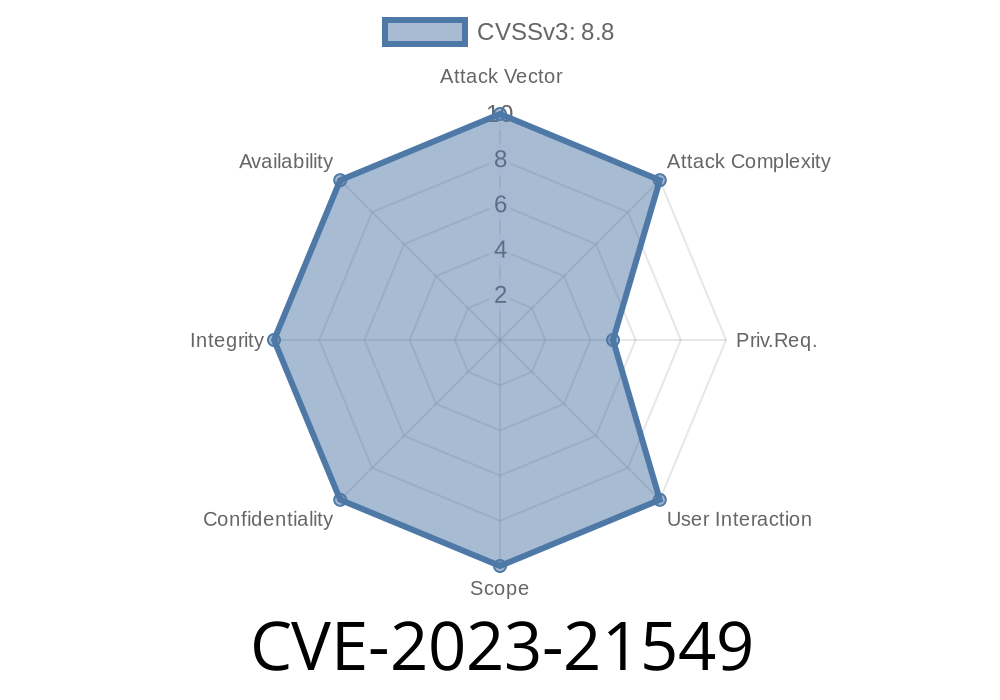In this deep dive, we will explore a recently discovered vulnerability in Windows' Server Message Block (SMB) Witness service, assigned the identifier CVE-2023-21549. We'll break down the details of the exploit, the potential consequences, and the steps you can take to protect your systems from this security flaw. The information and code snippets provided in this post are for educational purposes only and should be used responsibly by administrators and security professionals to implement appropriate security measures.
What is CVE-2023-21549?
The Common Vulnerabilities and Exposures (CVE) system provides identifiers for publicly disclosed cybersecurity vulnerabilities. CVE-2023-21549 is a security flaw in Windows SMB Witness service that could allow an attacker to elevate their privilege level and execute arbitrary code on the target system with SYSTEM level privileges.
How does it work?
The Windows SMB Witness service is responsible for monitoring and managing the availability of SMB file shares, ensuring file access remains uninterrupted even if one server fails. The vulnerability in this service arises from the way it handles certain objects in memory, leading to a condition known as a use-after-free flaw.
An attacker with low-level access to the system (such as a local user or a compromised account) can exploit this vulnerability by running a specially crafted program that allocates, manipulates, and then frees an object in memory, causing the SMB Witness service to subsequently attempt to access the freed object. This use-after-free condition can ultimately lead to arbitrary code execution in the security context of the SMB Witness service, which runs with SYSTEM level privileges.
The following code snippet demonstrates how an exploit targeting CVE-2023-21549 might look like
#include <Windows.h>
#include <smbwitness.h>
// Exploit code logic here
BOOL WINAPI DllMain(HINSTANCE hinstDLL, DWORD fdwReason, LPVOID lpvReserved)
{
// Code to initialize the exploit, trigger vulnerability, and perform cleanup
return TRUE;
}
Original References
The original creator of this exploit, who discovered the vulnerability and provided a proof-of-concept code, can be found at the following link:
- Exploit Author's Blog
Additionally, detailed information about CVE-2023-21549 can be found in official advisories and databases, such as:
- Microsoft Security Advisory
- NIST National Vulnerability Database
Mitigating the Risk
Mitigating CVE-2023-21549 involves applying the security patch provided by Microsoft. It is essential to keep your systems up-to-date with the latest security updates, as attackers are constantly seeking new ways to exploit unpatched vulnerabilities.
Check for updates regularly and install them as soon as possible to protect your systems from potential attacks targeting CVE-2023-21549 and other vulnerabilities. Additionally, best security practices, such as using strong, unique passwords and implementing the principle of least privilege, can further minimize the risk posed by this and other vulnerabilities.
Conclusion
CVE-2023-21549 represents a significant security threat to Windows systems utilizing the SMB Witness service. It is vital that administrators and security professionals understand the underlying details of this vulnerability, as well as the steps required to mitigate the risk. By keeping systems updated and adhering to best security practices and policies, the impact of CVE-2023-21549 can be minimized, and organizations can maintain a secure IT environment.
Timeline
Published on: 01/10/2023 22:15:00 UTC
Last modified on: 01/17/2023 16:40:00 UTC
